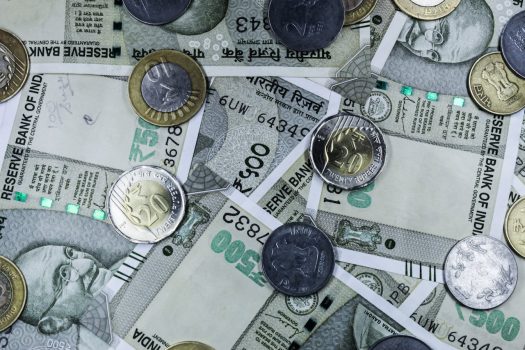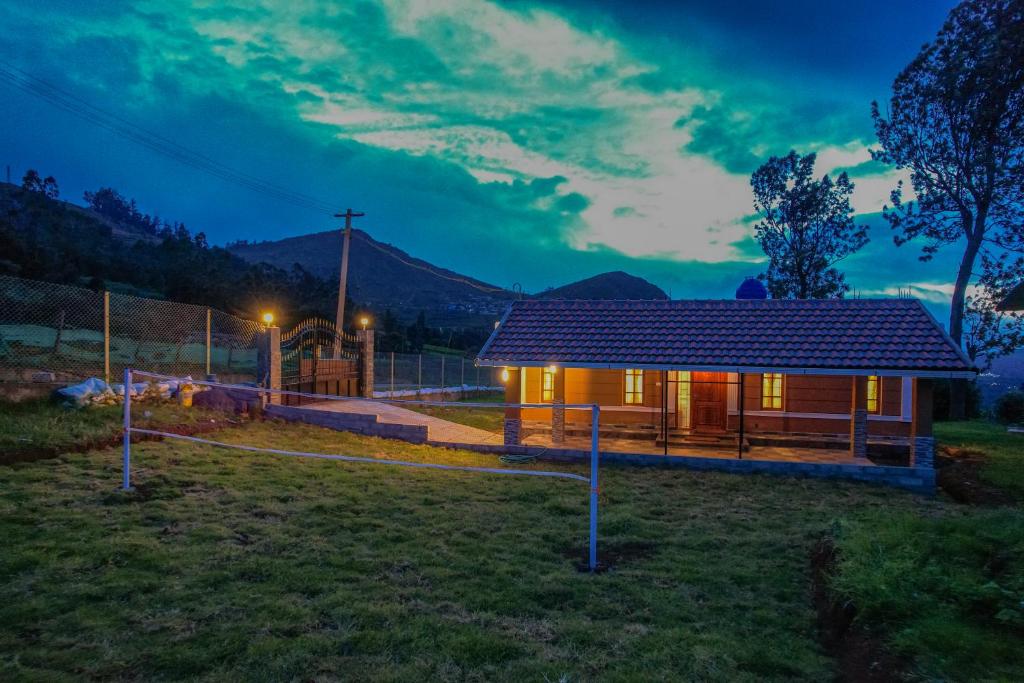 Pin
Pin Photo by Ravi Roshan
The Reserve Bank of India recently simplified rules governing international trade settlements in Indian rupees, making it easier for banks to facilitate cross-border transactions. In August 2025, the central bank issued a circular that removes the requirement for prior RBI approval when banks want to open Special Rupee Vostro Accounts for foreign banks.
This administrative change builds upon the rupee trade settlement framework that the RBI made rupee global trade possible through its initial introduction in July 2022. The system was designed to reduce India’s reliance on hard currencies like the US dollar for international trade, particularly with countries facing economic sanctions or those seeking alternatives to traditional payment methods.
The recent policy update reflects the RBI’s ongoing efforts to streamline bureaucratic processes while maintaining proper oversight of international rupee flows. While the changes are primarily administrative rather than revolutionary, they represent practical steps toward making rupee-based international trade more accessible for financial institutions and businesses.
Table of Contents
Understanding the New Banking Rules
The August 2025 RBI circular (RBI/2025-26/71) eliminates the previous requirement for banks to seek prior approval before opening Special Rupee Vostro Accounts (SRVAs) for foreign correspondent banks. This administrative change reduces paperwork and processing time for international banking relationships focused on rupee trade settlements. Banks can now establish these specialized accounts more quickly, though they must still comply with existing regulatory guidelines.
The circular maintains important safeguards including reporting requirements and compliance with anti-money laundering regulations. Banks must continue submitting periodic reports about their rupee trade activities to ensure proper oversight of cross-border transactions. These balanced regulations aim to facilitate legitimate trade while preventing misuse of the international rupee settlement system.
The practical impact means foreign banks interested in offering rupee services to their customers face fewer bureaucratic hurdles. However, the actual adoption rate will depend on market demand and the commercial viability of rupee-denominated trade relationships. Early indicators suggest modest but growing interest from banks in countries that regularly trade with India, though comprehensive usage statistics remain limited at this stage.
The Original Framework and Its Evolution
The RBI first introduced the rupee trade settlement mechanism in July 2022, establishing the basic structure for international transactions using Indian currency. This original framework required extensive documentation and approval processes that many banks found cumbersome to navigate. The system was designed primarily to facilitate trade with countries facing international sanctions or those seeking alternatives to dollar-based transactions.
Under the initial rules, banks needed specific RBI permission for each Special Rupee Vostro Account, creating delays that could extend for weeks or months. This bureaucratic bottleneck discouraged some potential participants and slowed the system’s adoption rate. The lengthy approval process also made it difficult for banks to respond quickly to their customers’ international trade financing needs.
The August 2025 updates address these operational challenges by streamlining the account opening process while maintaining essential regulatory oversight. This evolution reflects the RBI’s learning experience from nearly three years of operating the system. Analysis suggests this administrative improvement could encourage more banks to explore rupee settlement options, though the actual impact will depend on broader economic factors and international trade patterns.
Current Usage and Real Examples
Russia has been one of the most significant users of the rupee trade settlement system, particularly for oil and other commodity transactions with India. This usage increased substantially after international sanctions limited Russia’s access to dollar-based payment systems. The rupee mechanism provided a practical alternative for continuing bilateral trade relationships between the two countries.
Several other countries including UAE, Bangladesh, and Sri Lanka have also explored or implemented rupee trade arrangements with India. These relationships typically focus on specific sectors like energy, textiles, or agricultural products where direct currency settlement offers cost advantages. However, the total volume of rupee-denominated trade remains a small fraction of India’s overall international commerce.
Based on available reports, most rupee settlements currently handle trade values ranging from millions to low billions of dollars annually, though precise figures vary by trading partner. The system appears most attractive for countries with significant trade imbalances with India or those seeking to diversify their currency exposure. Industry analysts note that adoption rates have been gradual rather than dramatic, reflecting businesses’ natural caution when adopting new payment mechanisms.
Banking Infrastructure Development
The simplified SRVA opening process allows banks to establish rupee trading capabilities more efficiently, reducing setup time from months to weeks in many cases. This improvement addresses one of the key operational barriers that previously discouraged international banks from offering rupee services to their customers. However, banks still need adequate rupee liquidity and risk management systems to operate these accounts effectively.
Several major international banks have established rupee trading desks in financial centers like Singapore, Dubai, and Hong Kong, though the scale remains modest compared to dollar or euro operations. These institutions typically focus on serving customers with existing India trade relationships rather than actively promoting rupee usage to new markets. The infrastructure development reflects cautious optimism about rupee internationalization prospects.
Market observers report that smaller regional banks face greater challenges in building rupee capabilities due to limited resources and expertise. Many rely on correspondent banking relationships with larger institutions to offer basic rupee services to their customers. This creates a tiered system where major banks provide the foundation while smaller institutions access rupee functionality through partnerships rather than direct RBI relationships.
Trade Sector Applications
Manufacturing exporters, particularly in textiles and pharmaceuticals, have shown the most interest in rupee settlement options according to industry associations. These sectors often have established relationships with buyers in countries that accept rupee payments, making direct currency settlement commercially viable. However, adoption varies significantly based on individual company risk tolerance and existing banking relationships.
Energy trade represents a significant portion of rupee settlements, especially in arrangements with Russia and some Middle Eastern suppliers. Oil and coal imports through rupee mechanisms help reduce India’s dollar requirements for energy purchases. Trade data suggests these arrangements typically involve government-to-government agreements or large state-owned enterprises rather than private sector transactions.
Small and medium enterprises face practical challenges in accessing rupee settlement systems due to limited international banking relationships and unfamiliarity with the documentation requirements. Most SMEs continue using traditional dollar-based trade financing through their local banks, which offer more familiar processes and established support systems. Export promotion agencies indicate they’re working to educate smaller businesses about rupee settlement options, though uptake remains limited.
Regulatory Safeguards and Compliance
The August 2025 circular maintains strict reporting requirements for banks operating Special Rupee Vostro Accounts, ensuring regulatory oversight continues despite simplified opening procedures. Banks must submit detailed transaction reports and maintain compliance with existing anti-money laundering and know-your-customer regulations. These safeguards help prevent misuse of the system while allowing legitimate trade to proceed more smoothly.
Foreign banks participating in rupee settlements must still meet capital adequacy requirements and demonstrate proper risk management capabilities. The RBI retains authority to examine these accounts and can suspend operations if regulatory violations occur. This balanced approach aims to encourage participation while maintaining the integrity of India’s financial system.
Financial compliance experts note that banks need robust systems to track rupee flows and ensure transactions align with legitimate trade activities. The regulatory framework requires banks to verify the underlying commercial purposes of rupee settlements, preventing speculative or illegal uses of the system. These compliance costs represent a significant consideration for banks evaluating whether to offer rupee services to their customers.
Economic Impact Assessment
Early data suggests rupee trade settlements represent a small but growing portion of India’s total international commerce, though comprehensive statistics remain limited. The system appears most effective for bilateral trade relationships where both countries benefit from reduced currency conversion costs. However, the overall impact on India’s foreign exchange reserves and trade balance remains modest compared to traditional dollar-denominated transactions.
Economic analysts observe that rupee internationalization faces natural market constraints, including limited global demand for Indian currency outside of India-specific trade relationships. Unlike major reserve currencies, the rupee lacks deep secondary markets and widespread acceptance for international investments. These structural factors limit the speed at which rupee usage can expand globally.
The cost savings for businesses using rupee settlements vary depending on transaction size, currency volatility, and banking relationships. Industry reports indicate savings of 1-3% on foreign exchange costs are typical, though these benefits must be weighed against potential liquidity constraints and limited hedging options. Many companies continue preferring dollar transactions due to their familiarity and the robust supporting infrastructure available globally.
International Monetary Context
The rupee settlement system operates within a broader global trend toward currency diversification, where emerging economies explore alternatives to dollar-dominated trade systems. International monetary experts note that similar initiatives exist with China’s yuan, though each country’s approach reflects its specific economic circumstances and trade relationships. The rupee mechanism represents India’s contribution to this gradual shift toward multipolar currency arrangements.
Central bank communications from various countries indicate cautious interest in bilateral currency arrangements, particularly for regional trade. However, practical adoption requires overcoming significant infrastructure and liquidity challenges that favor established international currencies. The dollar’s dominance in global foreign exchange markets remains largely intact despite these emerging alternatives.
Financial market analysis suggests that rupee internationalization will likely remain gradual and focused on specific trade corridors rather than achieving broad global adoption. The currency lacks the deep capital markets and institutional infrastructure that support major international currencies. Policy researchers indicate this evolution could take decades rather than years, depending on India’s continued economic growth and financial market development.
Business Practical Considerations
Companies considering rupee settlements must evaluate several practical factors beyond potential cost savings. Currency volatility represents a significant concern, as rupee exchange rates can fluctuate substantially against other currencies, potentially erasing transaction fee savings. Trade finance specialists recommend that businesses carefully assess their risk tolerance and hedging capabilities before committing to rupee-denominated contracts.
Banking relationship requirements add complexity for companies unfamiliar with rupee systems. Businesses need access to banks that offer rupee services and understand the specific documentation requirements for international settlements. Industry surveys suggest many companies prefer maintaining existing dollar-based arrangements due to established banking relationships and operational familiarity, despite potential cost benefits from rupee usage.
Business consultants report that successful rupee adoption typically requires companies to have substantial ongoing trade relationships with India or rupee-accepting countries. One-off transactions often don’t justify the administrative effort required to establish rupee payment capabilities. Market feedback indicates that businesses with regular India-focused operations show the highest satisfaction rates with rupee settlement systems, while occasional users often find traditional methods more convenient.
Technology and Infrastructure Development
Financial technology providers report modest investments in rupee-specific payment solutions, focusing primarily on integration with existing international transfer systems rather than standalone platforms. Most banks rely on traditional correspondent banking networks adapted for rupee settlements rather than developing entirely new technological infrastructure. This approach keeps implementation costs manageable while providing basic functionality for rupee transactions.
Industry sources indicate that payment processing times for rupee settlements typically range from same-day to 48 hours, depending on the banks involved and transaction complexity. This performance matches standard international wire transfer speeds rather than representing breakthrough efficiency gains. Banking technology specialists note that further improvements would require substantial investments in cross-border payment infrastructure that may not be commercially justified by current transaction volumes.
Digital banking platforms are gradually incorporating rupee settlement options for business customers with India trade relationships. However, these features often require manual intervention and specialized documentation rather than fully automated processing. Fintech analysts suggest that broader technology adoption will depend on increased transaction volumes that justify the development costs for more sophisticated rupee handling systems across the global banking network.
FAQs
The RBI eliminated prior approval requirements for banks opening Special Rupee Vostro Accounts, streamlining the process.
Russia, UAE, Bangladesh, and Sri Lanka have established or explored rupee settlement arrangements with India.
Exact figures vary, but usage represents a small fraction of India’s total international commerce volume.
Primary benefits include reduced foreign exchange costs (typically 1-3%) and eliminated currency conversion requirements.
Experts suggest this would require decades of development; current focus is on specific bilateral trade relationships.
































